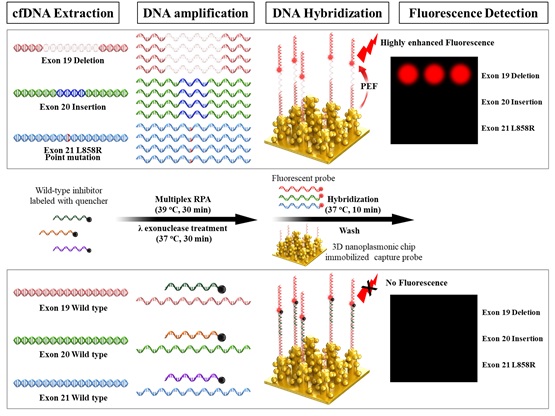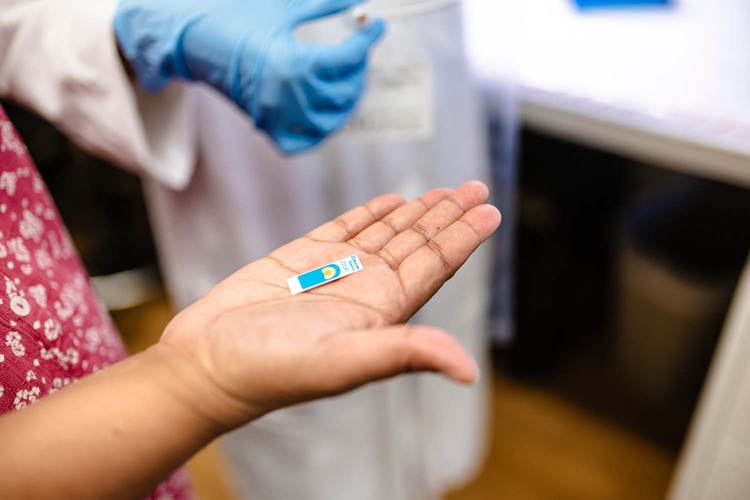New Technology Detects Cancer Mutant Genes in Blood with World's Highest Sensitivity
Posted on 11 Sep 2024
Current genetic analysis technologies have struggled with low analytical sensitivity when detecting mutated genes, especially in early-stage cancer patients, making accurate diagnoses challenging. Furthermore, establishing quick treatment strategies and using these technologies for screening tests has been limited by the high cost, lengthy analysis times, and the need for specialized equipment. To address these issues, researchers have developed a new technology capable of detecting cancer mutations in the blood with an unprecedented mutation detection sensitivity of 0.000000001%. This innovation, based on plasmonic nanomaterials for optical signal amplification, was tested on blood samples from lung cancer patients (stages 1-4) and healthy individuals for EGFR mutations, achieving a diagnostic accuracy of 96%.
Developed by the Korea Institute of Materials Science (KIMS, Changwon, South Korea), this low-cost technology can analyze various cancer mutations in the target gene region within one hour, boasting a sensitivity of 0.000000001% (100 zM mutation/10 nM wild-type), which is 100,000 times greater than the previously reported level of 0.0001%. This advancement allows for the early detection of cancer using blood samples from lung cancer patients. The technology relies on nanomaterials that enhance the fluorescence signal and a unique primer/probe design that suppresses the fluorescence of normal genes while amplifying the signal of mutated cancer genes. This accurate detection of fluorescence signals is critical for precisely detecting even tiny amounts of cancerous mutations.

The research team developed a biochip in the form of a microarray, capable of detecting three different EGFR mutant genes (deletions, insertions, and point mutations) on a plasmonic substrate made of high-density, three-dimensional gold nanostructures. In clinical trials involving 43 lung cancer patients (stages 1-4) and 40 healthy individuals, the technology demonstrated a clinical sensitivity of 93% for cancer patients and a clinical specificity of 100% for the healthy group. This breakthrough can play a crucial role in the early diagnosis of cancer, monitoring disease recurrence, and assessing treatment effectiveness, helping to establish personalized treatment plans. Moreover, the ability to perform liquid biopsies using blood rather than invasive surgical biopsies reduces the burden on patients and simplifies the examination process. This technology also shows promise as a regular screening tool, ultimately improving cancer management and patient outcomes.
“Because it is capable of comprehensively detecting various cancer mutations with the world’s highest level of ultra-high sensitivity, it can become a leading player in the early cancer diagnosis and treatment/recurrence monitoring market,” said KIMS senior researcher Dr. Min-young Lee. “We expect that this will greatly improve the survival rate and quality of life of cancer patients.”
Related Links:
KIMS














